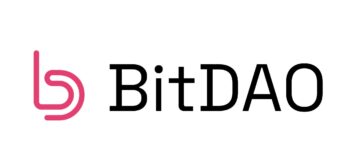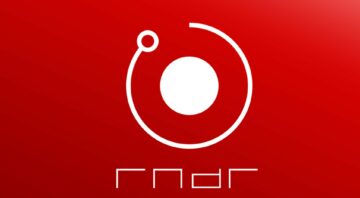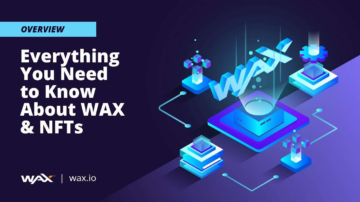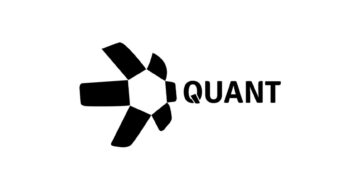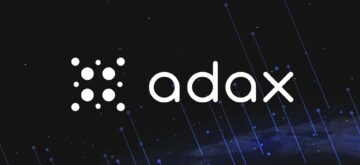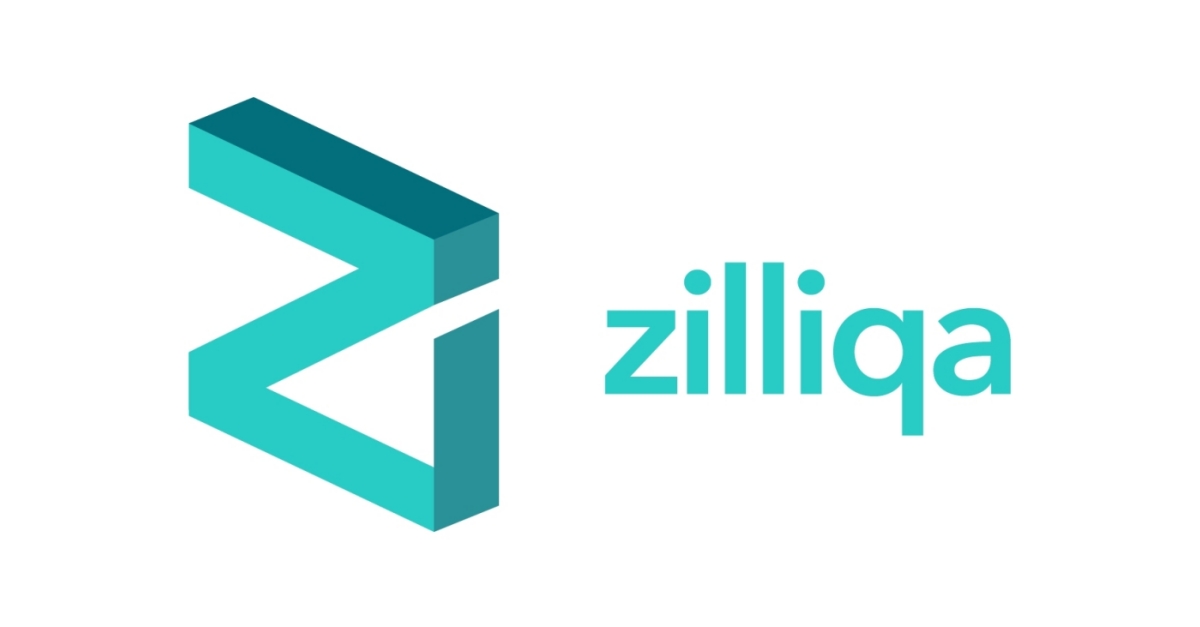
This resource explores the cutting-edge world of Zilliqa, an innovative blockchain platform that is setting new standards in the cryptocurrency landscape. Offering unparalleled scalability and speed, Zilliqa’s dynamic features offer solutions to some of the most pressing challenges facing cryptocurrencies today. Whether you’re a seasoned crypto enthusiast or a curious newcomer, this guide will provide you with an in-depth understanding of what Zilliqa is, its remarkable capabilities, and its promising future.
Background
In 2017, the seeds of the Zilliqa project were sown by a team of dedicated researchers hailing from the National University of Singapore. This dynamic founding team comprised Xinshu Dong, Yaoqi Jia, Amrit Kumar, and Prateek Saxena, who had previously collaborated with Loi Luu, the CEO and Co-founder of Kyber Network, among others. In June of the same year, Zilliqa Research, the enterprise helming the Zilliqa project, was formally established, with their first testnet making its debut just a few months later.
Zilliqa is remarkable for bringing the concept of sharding into practical use within its protocol, thereby addressing the scalability issues that have been observed in numerous other blockchains. The innovative sharded structure of Zilliqa enables multiple chains to run transaction processes simultaneously, thus expanding the overall throughput of the network. The primary driving force behind Zilliqa’s creation was the vision of a platform capable of executing smart contracts on a large scale while adhering to the fundamental tenets of blockchain technology, including decentralized node management.
The leadership at Zilliqa Research was shaped by its early connections with the National University of Singapore. The university’s School of Computing alumni, Dong Xinshu, assumed the role of CEO, with Amrit Kumar serving as the chief scientific officer and Yaoqi Jia stepping in as the chief technology officer.
Notably, Zilliqa Research and Anquan Capital hold a substantial proportion of ZIL reserves.
What is Zilliqa?
Zilliqa is a unique public blockchain that has been crafted to address the pressing problems of scalability and throughput, which are common obstacles for numerous cryptocurrencies, including big players like Bitcoin and Ethereum. Zilliqa has harnessed the power of sharding to amplify transaction speeds and construct a scalable, secure platform. This is achieved by dividing the network into multiple nodes that carry out processes concurrently.
Zilliqa’s creators make the bold claim of being the first-ever blockchain to fully leverage sharding to overcome the scalability challenge, a feat they assert has been successfully accomplished. As per the information detailed in the Zilliqa white paper, sharding propels the blockchain to reach transaction speeds that outpace those of the Ethereum network by around a thousandfold.
As a permissionless blockchain network boasting high throughput, Zilliqa provides an inviting platform for developers. They can employ Zilliqa to host decentralized applications and run smart contracts, free from some of the hurdles that plague many older blockchain platforms, such as network congestion or steep gas fees.
How Does Zilliqa Work?
Zilliqa operates on the groundbreaking principle of sharding technology to combat network congestion. So, what exactly is sharding? Sharding is essentially the segmentation of a network into smaller parts known as shards, resulting in the formation of multiple clusters of nodes. This approach allows miners to verify transactions in parallel. In simpler terms, different shards can process separate transactions concurrently instead of collectively, which is the norm with several other cryptocurrencies. In a network operating on sharding, transaction processing speed increases with the size of the network because the more the shards, the more transactions can be processed simultaneously.
Sharding does present a potential challenge in terms of achieving consensus for transaction verification. The consensus protocol of certain tokens, such as Bitcoin, necessitates agreement from half of the nodes for a transaction to be verified. This could potentially be a cumbersome process. However, Zilliqa elegantly sidesteps this issue with its innovative hybrid consensus mechanism. This mechanism is not only faster but also requires less computational power to process transactions compared to traditional methods utilized by older blockchains like Ethereum and Bitcoin. The secret lies in delegating verification to the shard level, where nodes are spared the task of processing entire blocks of information.
To further ensure the validity of the verification process, Zilliqa introduces a second layer where a group of nodes constitutes a delivery service committee. This committee’s function is to consolidate the smaller blocks into a single, coherent block. This unique setup enables the DS committee to have full access to the entire blockchain, thereby validating the verification process.
ZIL
In the year 2017, Zilliqa launched its own native ERC-20 token, commonly referred to as ZIL. This token was initially made accessible via the Zilliqa token generation event (TGE), which concluded in the first quarter of 2018. Following this, in 2020, these tokens underwent a token swap to transition to the Zilliqa mainnet. As a result of this move, Zilliqa emerged as an independent blockchain with its unique native token.
The ZIL token has a predefined maximum supply of 21 billion coins. The Zilliqa project, as per its whitepaper, intends to mine approximately 80 percent of all ZIL tokens within the first four years, with the remaining tokens to be mined over the subsequent six years. This implies that by the year 2027, all the tokens would have been mined, marking the existence of a hard cap on the token.
Moreover, the block reward is set to undergo a gradual decrease over a period of ten years. This method of token issuance ensures a smooth transition as the block rewards won’t experience drastic drops after certain blocks. This approach aids in maintaining the network hash rate steady while the rewards slowly diminish over time. Consequently, this could be interpreted as a design that aims to maintain ZIL as a deflationary asset in the long run.
ZIL serves multiple roles within the Zilliqa ecosystem. It functions as the primary medium of transactions on the Zilliqa mainnet and also as a reward for miners for block generation. In addition to ZIL, there’s also gZIL, which stands as the protocol’s governance token. This token empowers users to suggest amendments or enhancements to the protocol. gZIL comes with a fixed supply of 722,000 coins, and the only way to acquire these is by staking ZIL tokens.
Mining and Staking
Unique among major blockchains, Zilliqa offers support for both mining and staking. While staking is typically seen as a fundamental aspect of blockchain security, in Zilliqa’s case, it serves as an additional incentive, encouraging users to participate in the network and earn rewards. The somewhat lower staking participation rate for ZIL might be a reflection of this dual mining-staking model.
However, when it comes to annual percentage yield (APY), ZIL stands out by offering rates on the higher end compared to other prominent blockchains. There is one caveat: to start accruing staking rewards, ZIL holders must lock up their tokens for roughly a 14-day period. But for those with a long-term investment perspective, this constraint is hardly an issue.
Metapolis
Zilliqa unveiled Metapolis, a pioneering metaverse as a service (MaaS) platform that empowers users to craft their personalized virtual universes. Metapolis is set to furnish the necessary technology and infrastructure for users to create and manage their metaverses with ease. The protocol aims to pave the way for smaller entities to step into the virtual world arena by significantly reducing the hefty costs that typically characterize traditional metaverse services.
As outlined in a December 2021 blog post by the Zilliqa team, Metapolis, a term of Greek origin implying ‘city’, is conceptualized as an advanced extended reality (XR metaverse), which is a blend of augmented reality (AR) and virtual reality (VR). This innovative XR metaverse runs on Zilliqa’s secure and scalable blockchain platform.
Metapolis has gained notable interest due to its ultra-realistic graphics and its distinctive ability to engage users through gamification, e-commerce, and NFTs. Teaming up with partners like Agora, a photo-sharing app, Zilliqa aims to draw a multitude of brands into the Metapolis universe, thereby enriching the user experience substantially.
Conclusion
So here we are, at the end of our deep dive into the intriguing world of Zilliqa. We’ve navigated its origins, explored its unique offerings like sharding and dual mining-staking model, and understood its place in the realm of cryptocurrencies. From its highly efficient token, ZIL, to its exciting foray into the metaverse with Metapolis, Zilliqa is clearly at the forefront of blockchain innovation.
But remember, the world of blockchain technology is dynamic and ever-evolving. As Zilliqa continues to grow and adapt to new challenges and opportunities, our exploration is far from over. Stay tuned, keep learning, and prepare for more fascinating insights into the ever-expanding world of Zilliqa and its potential to transform the digital landscape.
- SEO Powered Content & PR Distribution. Get Amplified Today.
- EVM Finance. Unified Interface for Decentralized Finance. Access Here.
- Quantum Media Group. IR/PR Amplified. Access Here.
- PlatoAiStream. Web3 Data Intelligence. Knowledge Amplified. Access Here.
- Source: https://www.asiacryptotoday.com/ziliqa/
- :has
- :is
- :not
- :where
- $UP
- 000
- 2017
- 2018
- 2020
- 2021
- 21 Billion
- 80
- a
- ability
- access
- accessible
- accomplished
- achieved
- achieving
- acquire
- adapt
- addition
- Additional
- address
- addressing
- advanced
- After
- Agora
- Agreement
- aids
- aims
- All
- allows
- also
- amendments
- among
- Amrit
- an
- and
- and infrastructure
- annual
- annual percentage yield
- app
- applications
- approach
- approximately
- APY
- AR
- ARE
- Arena
- around
- AS
- asia
- Asia Crypto Today
- aspect
- asset
- assumed
- At
- augmented
- Augmented Reality
- augmented reality (ar)
- background
- BE
- because
- been
- behind
- being
- Big
- Billion
- Bitcoin
- Blend
- Block
- block rewards
- blockchain
- blockchain innovation
- blockchain network
- blockchain platform
- Blockchain security
- blockchain technology
- blockchains
- Blocks
- Blog
- boasting
- bold
- both
- brands
- Bringing
- but
- by
- CAN
- cap
- capabilities
- capable
- capital
- carry
- case
- ceo
- certain
- chains
- challenge
- challenges
- characterize
- chief
- chief technology officer
- claim
- clearly
- Co-founder
- COHERENT
- Coins
- collaborated
- collectively
- combat
- comes
- committee
- Common
- commonly
- compared
- Comprised
- computational power
- computing
- concept
- concluded
- conclusion
- congestion
- Connections
- Consensus
- consensus mechanism
- Consequently
- consolidate
- construct
- continues
- contracts
- Costs
- could
- craft
- create
- creation
- creators
- crypto
- cryptocurrencies
- cryptocurrency
- curious
- cutting-edge
- debut
- December
- december 2021
- decentralized
- Decentralized Applications
- decrease
- dedicated
- deep
- deep dive
- deflationary
- delivery
- Design
- detailed
- developers
- different
- digital
- distinctive
- does
- draw
- driving
- Drops
- due
- dynamic
- e-commerce
- Early
- earn
- ease
- ecosystem
- efficient
- emerged
- empowers
- enables
- encouraging
- end
- engage
- enhancements
- enriching
- ensure
- ensures
- Enterprise
- enthusiast
- Entire
- entities
- ERC-20
- essentially
- established
- ethereum
- ethereum network
- Event
- exactly
- exciting
- executing
- expanding
- experience
- exploration
- Explored
- explores
- extended reality
- facing
- far
- fascinating
- faster
- feat
- Features
- Fees
- few
- First
- first-ever
- fixed
- following
- For
- Foray
- Force
- forefront
- Formally
- formation
- founding
- four
- Free
- from
- full
- fully
- function
- functions
- fundamental
- further
- future
- gained
- gamification
- GAS
- gas fees
- generated
- generation
- governance
- gradual
- graphics
- groundbreaking
- Group
- Grow
- guide
- gZIL
- had
- Half
- Hard
- hash
- hash rate
- Have
- here
- High
- higher
- highly
- hold
- holders
- host
- However
- HTTPS
- Hurdles
- Hybrid
- in
- in-depth
- Incentive
- Including
- Increases
- independent
- information
- Infrastructure
- initially
- Innovation
- innovative
- insights
- instead
- intends
- interest
- into
- Into the Metaverse
- intriguing
- Introduces
- investment
- inviting
- issuance
- issue
- issues
- IT
- ITS
- jpg
- june
- just
- Keep
- known
- kyber
- Kyber Network
- landscape
- large
- later
- launched
- layer
- Leadership
- learning
- less
- Level
- Leverage
- lies
- like
- Long
- long-term
- lower
- made
- mainnet
- maintain
- maintaining
- major
- make
- Making
- manage
- management
- many
- marking
- maximum
- mechanism
- medium
- Metaverse
- metaverses
- method
- methods
- might
- mined
- Miners
- Mining
- model
- months
- more
- most
- move
- multiple
- multiple chains
- multitude
- must
- National
- native
- Native Token
- necessary
- network
- New
- newcomer
- NFTs
- node
- nodes
- notable
- numerous
- observed
- obstacles
- of
- offer
- offering
- Offerings
- Offers
- Officer
- older
- on
- ONE
- only
- operates
- operating
- opportunities
- or
- Origin
- Other
- Others
- our
- out
- outlined
- over
- overall
- Overcome
- own
- Paper
- Parallel
- participate
- participation
- partners
- parts
- pave
- percent
- percentage
- period
- permissionless
- Personalized
- perspective
- Pioneering
- Place
- Plague
- platform
- Platforms
- plato
- Plato Data Intelligence
- PlatoData
- players
- Post
- potential
- potentially
- power
- Practical
- Prepare
- present
- pressing
- previously
- primary
- principle
- problems
- process
- processed
- processes
- processing
- project
- prominent
- promising
- proportion
- protocol
- protocols
- provide
- provides
- public
- public blockchain
- Quarter
- Rate
- Rates
- reach
- Reality
- realm
- reducing
- referred
- reflection
- remaining
- remarkable
- remember
- requires
- research
- researchers
- reserves
- resource
- result
- resulting
- Reward
- Rewards
- Role
- roles
- roughly
- Run
- runs
- same
- Scalability
- scalable
- Scale
- School
- scientific
- seasoned
- Second
- Secret
- secure
- security
- seeds
- seen
- segmentation
- separate
- serves
- service
- Services
- serving
- set
- setting
- setup
- several
- shaped
- sharded
- sharding
- significantly
- simultaneously
- Singapore
- single
- SIX
- Size
- Slowly
- smaller
- smart
- Smart Contracts
- smooth
- So
- Solutions
- some
- somewhat
- speed
- speeds
- Staking
- Staking Rewards
- standards
- stands
- start
- stay
- steady
- Step
- stepping
- structure
- subsequent
- substantial
- Successfully
- such
- suggest
- supply
- support
- swap
- Task
- team
- teaming up
- Technology
- ten
- tenets
- term
- terms
- testnet
- that
- The
- The Block
- the information
- The Metaverse
- the world
- their
- theme
- There.
- thereby
- These
- they
- this
- those
- Through
- throughput
- time
- to
- today
- token
- token generation event
- Tokens
- traditional
- transaction
- transaction speeds
- Transactions
- Transform
- transition
- typically
- undergo
- understanding
- understood
- underwent
- unique
- Universe
- university
- unparalleled
- unveiled
- use
- User
- User Experience
- users
- utilized
- validating
- validity
- Verification
- verified
- verify
- via
- Virtual
- Virtual reality
- virtual world
- vision
- vr
- was
- Way..
- we
- were
- What
- What is
- when
- whether
- which
- while
- white
- white paper
- Whitepaper
- WHO
- will
- with
- within
- Work
- world
- would
- XR
- year
- years
- Yield
- you
- zephyrnet
- zil
- Zilliqa
- Zilliqa Ecosystem

